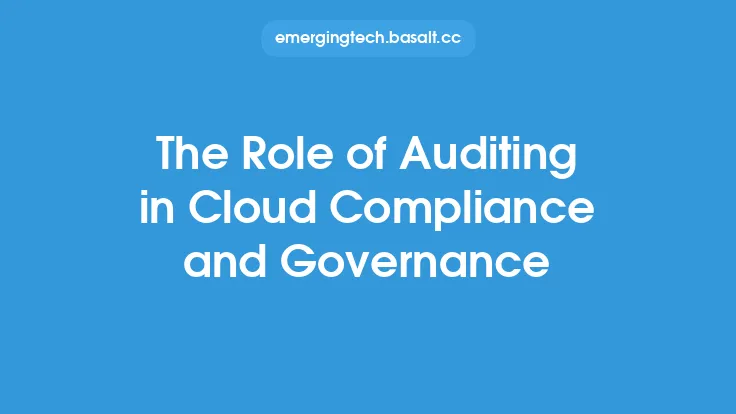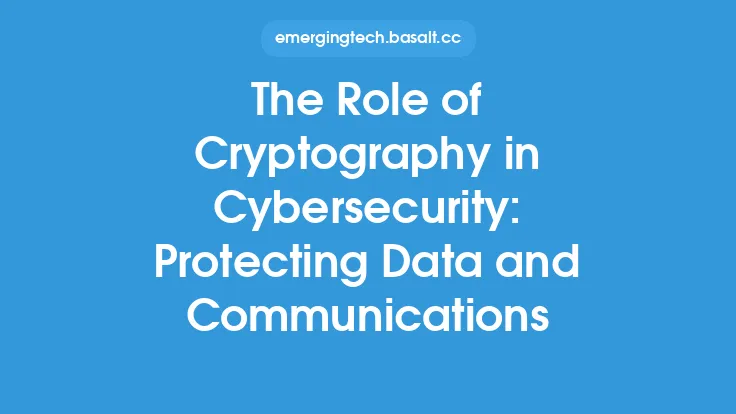In today's digital landscape, cybersecurity is a critical component of any organization's overall strategy. As technology continues to evolve and threats become more sophisticated, the importance of a robust cybersecurity strategy cannot be overstated. A key aspect of this strategy is compliance, which plays a vital role in ensuring that an organization's cybersecurity practices align with relevant laws, regulations, and industry standards. Compliance is not just a necessary evil, but a crucial element in protecting an organization's assets, reputation, and bottom line.
Introduction to Compliance in Cybersecurity
Compliance in cybersecurity refers to the process of ensuring that an organization's cybersecurity practices and policies conform to relevant laws, regulations, and industry standards. This includes adhering to guidelines set by government agencies, industry bodies, and other regulatory organizations. Compliance is essential in preventing data breaches, protecting sensitive information, and maintaining the trust of customers, partners, and stakeholders. In the context of cybersecurity, compliance involves implementing controls, procedures, and technologies to prevent, detect, and respond to security threats.
The Importance of Compliance in Cybersecurity Strategy
Compliance is a critical component of a cybersecurity strategy because it helps organizations mitigate risk, protect assets, and maintain regulatory compliance. By implementing compliant cybersecurity practices, organizations can reduce the likelihood of data breaches, cyber attacks, and other security incidents. Compliance also helps organizations demonstrate their commitment to security and data protection, which can enhance their reputation and build trust with customers and partners. Furthermore, compliance can help organizations avoid costly fines, penalties, and legal liabilities associated with non-compliance.
Key Compliance Frameworks and Regulations
There are several key compliance frameworks and regulations that organizations must adhere to, depending on their industry, location, and type of data they handle. Some of the most notable include:
- PCI-DSS (Payment Card Industry Data Security Standard): Applies to organizations that handle credit card information.
- HIPAA (Health Insurance Portability and Accountability Act): Applies to organizations that handle protected health information.
- GDPR (General Data Protection Regulation): Applies to organizations that handle personal data of EU citizens.
- NIST Cybersecurity Framework: A voluntary framework that provides guidelines for managing cybersecurity risk.
- ISO 27001: An international standard for information security management systems.
Implementing Compliance in Cybersecurity
Implementing compliance in cybersecurity requires a structured approach that involves several key steps. These include:
- Conducting a risk assessment to identify potential security threats and vulnerabilities.
- Developing a compliance program that outlines policies, procedures, and controls for managing security risk.
- Implementing security controls, such as firewalls, intrusion detection systems, and encryption technologies.
- Conducting regular security audits and risk assessments to ensure ongoing compliance.
- Providing training and awareness programs for employees to ensure they understand their roles and responsibilities in maintaining compliance.
Technical Controls for Compliance
Technical controls play a critical role in ensuring compliance in cybersecurity. These controls include:
- Access control systems, such as multi-factor authentication and role-based access control.
- Encryption technologies, such as SSL/TLS and AES.
- Network security controls, such as firewalls and intrusion detection systems.
- Incident response systems, such as security information and event management (SIEM) systems.
- Vulnerability management systems, such as patch management and vulnerability scanning.
The Role of Governance in Compliance
Governance plays a critical role in ensuring compliance in cybersecurity. This includes establishing clear policies, procedures, and guidelines for managing security risk. Governance also involves assigning roles and responsibilities, establishing accountability, and ensuring that security practices are aligned with organizational objectives. Effective governance involves ongoing monitoring and review of security practices to ensure they remain compliant and effective.
Continuous Monitoring and Review
Continuous monitoring and review are essential components of a compliance program. This involves regularly reviewing security practices, controls, and procedures to ensure they remain compliant and effective. Continuous monitoring also involves identifying and addressing potential security threats and vulnerabilities, as well as implementing changes to security practices and controls as needed.
Best Practices for Compliance
Best practices for compliance in cybersecurity include:
- Establishing a clear compliance program that outlines policies, procedures, and controls for managing security risk.
- Conducting regular security audits and risk assessments to ensure ongoing compliance.
- Providing training and awareness programs for employees to ensure they understand their roles and responsibilities in maintaining compliance.
- Implementing technical controls, such as access control systems, encryption technologies, and network security controls.
- Establishing governance structures and processes to ensure accountability and oversight.
Conclusion
In conclusion, compliance plays a vital role in ensuring the effectiveness of a cybersecurity strategy. By implementing compliant cybersecurity practices, organizations can mitigate risk, protect assets, and maintain regulatory compliance. Compliance involves adhering to relevant laws, regulations, and industry standards, as well as implementing technical controls, governance structures, and ongoing monitoring and review. By following best practices for compliance, organizations can ensure they remain secure, compliant, and competitive in today's digital landscape.





